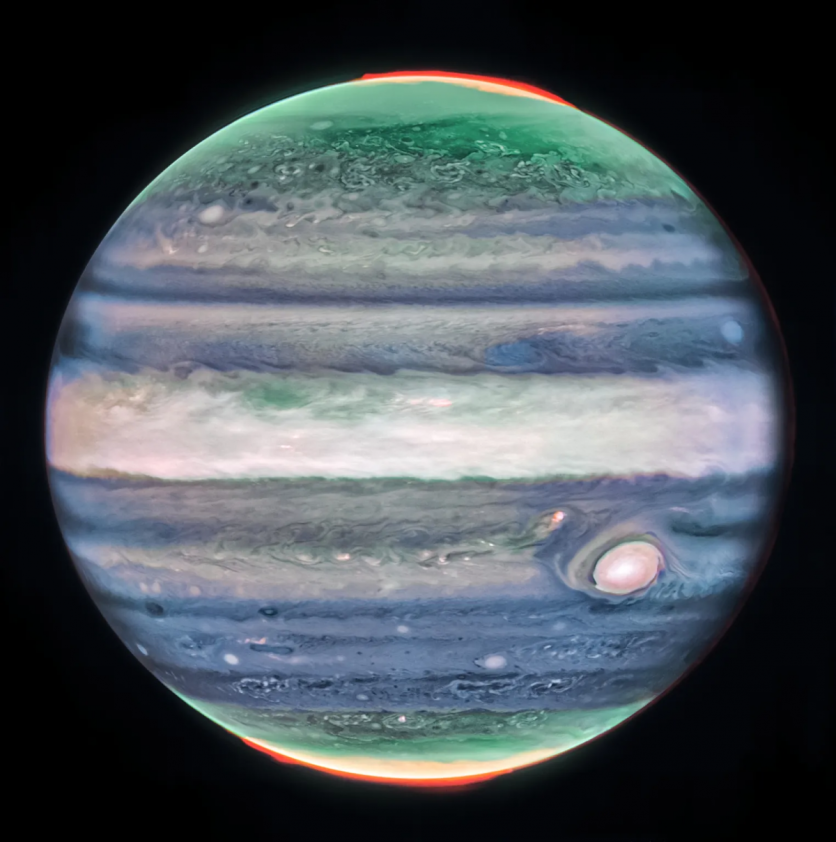NASA's James Webb Space Telescope has made a surprising discovery in Jupiter's atmosphere - a high-speed jet stream spanning over 3,000 miles across the planet's equator.
This newly identified feature sheds light on the interactions between the various layers of Jupiter's famously turbulent atmosphere. It also highlights Webb's unique ability to track such phenomena.

Jupiter's Atmosphere: From Blurred Hazes to Crisp Features
Lead author Ricardo Hueso from the University of the Basque Country in Bilbao, Spain, expressed his surprise, saying, "What we have always seen as blurred hazes in Jupiter's atmosphere now appear as crisp features that we can track along with the planet's fast rotation."
The research team used data from Webb's Near-Infrared Camera (NIRCam) captured in July 2022. The program was designed to take images of Jupiter 10 hours apart, or one Jupiter day, in four different filters, each capable of detecting changes in small features in different altitudes of Jupiter's atmosphere.
Webb's observations are unique because they focus on higher-altitude layers of the atmosphere, around 15-30 miles above Jupiter's cloud tops. Infrared imaging in these layers typically reveals blurry hazes, but Webb's enhanced resolution offers finer details within the bright, hazy band.
The newfound jet stream travels around 320 miles per hour and roughly 25 miles above the clouds in Jupiter's lower stratosphere. This speed is twice that of a Category 5 hurricane on Earth.
Comparing the winds observed by Webb at high altitudes to those at deeper layers from Hubble allowed the team to measure how fast the winds change with altitude.
Webb's precise resolution and wavelength coverage, combined with complementary observations from Hubble, were crucial in detecting and tracking this jet stream, as NASA noted.
Newfound Jet
The researchers anticipate further observations of Jupiter with Webb to determine if the jet's speed and altitude undergo any changes over time.
Leigh Fletcher of the University of Leicester in the United Kingdom said, "Jupiter has a complicated but repeatable pattern of winds and temperatures in its equatorial stratosphere, high above the winds in the clouds and hazes measured at these wavelengths."
"If the strength of this new jet is connected to this oscillating stratospheric pattern, we might expect the jet to vary considerably over the next 2 to 4 years - it'll be really exciting to test this theory in the years to come," he added.
This discovery underscores the ongoing potential for new revelations about Jupiter, even after years of observation from various observatories.
The capabilities of Webb have unveiled previously hidden features like this jet stream, demonstrating the ongoing importance of advanced telescopic technology. The findings of the research team were published in the journal Nature Astronomy.
Related Article : NASA James Webb Achieves One of Its First Major Science Goals After Probing the Atmosphere of TRAPPIST Planet


![Apple Watch Series 10 [GPS 42mm]](https://d.techtimes.com/en/full/453899/apple-watch-series-10-gps-42mm.jpg?w=184&h=103&f=9fb3c2ea2db928c663d1d2eadbcb3e52)


